Join More Than 50,000+ Subscribers and get latest camera news and rumors
NEW CAMERA VIDEOS ON YOUTUBE
|
By admin, on January 12th, 2020
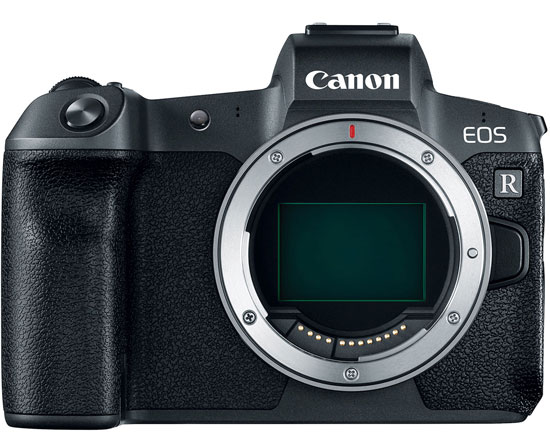
Canon EOS R camera was announced back on October 2018 and now we do have some strong set of rumors that Canon may announce new EOS R Mark II camera at the end of 2020. Canon EOS R camera features same sensor as we have seen in Canon 5D Mark IV. Finally, we have the specification of the upcoming Canon EOS R Mark II camera coming out from rumor mill.
1. Canon EOS R Mark II rumored specifications:
- 32mp
- IBIS
- DIGIC X (A different version than the EOS-1D Mark III)
- 12fps
- ISO 100 – 51,200
- 1 SD card slot
- 1 CFexpress slot
- No crop 4K video with DPAF
- No RAW video
- 5mp EVF
- May get a new naming scheme
2. A Quick Analysis – Sensor
From the above leaked specs it’s look like Canon will add a new 32 MP DPAF Sensor in their new camera [we are not sure about sensor resolution], at the same time rumor-mill failed to tell us about the type of sensor coming. It’s plain CMOS or BSI CMOS.
3. Canon EOS R Mark II have IBIS
Canon to include IBIS inside Canon EOS R Mark II and we were the first website to told you. Canon EOS R Mark II camera will have IBIS to compete against Sony A7 series and Nikon Z series FF Mirrorless camera. Not, only that we have also shown you Canon Mirrorless Camera patents with IBIS inside.
4. Dual Card Slot
Introduction of Dual Card Slot inside Canon EOS R Mark II is also expected, new generation of Canon FF Mirrorless camera made for professional shooters are said to carry Dual Card slots without a doubt.
5. 4K uncropped Video
No Crop Video with DPAF and No RAW video as told by rumor-mill, Well we do have Canon EOS M6 II that doesn’t have crop at 4K mode although it uses pixel binning algorithm. SO, for sure the EOS R Mark II will have proper 4K video recording mode without a crop and DPAF support as we have in the lower-end model.
We will update you soon as we get any new information.

Get LIVE RUMORS –> FACEBOOK | TWITTER | INSTAGRAM to to get live news + Canon rumors 24X7
By admin, on January 10th, 2020
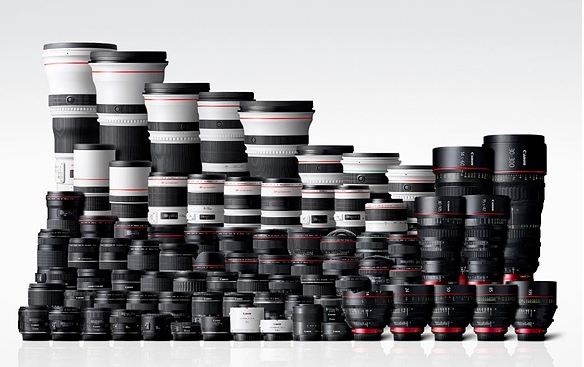
I am really SHOCKED to hear that, Canon representative said in an interview that they have stopped the research and development of Canon new EF or EF-S Lenses. No more new DSLR lenses in the near future until and unless we get we have market demand. [Yes you do have, but why such bad decisions in favor of mirrorless system ?] . Take a look at what they have said in an interview
Canon Europe pro product marketing senior manager, Richard Shepherd, said that while Canon will continue to support EF lenses, the plan is to focus on RF lenses.
‘As you know, last year we launched the RF mount and EOS R system […] To date we’ve launched ten critically acclaimed lenses, and as it’s a new system we plan to continue this, launching more RF lenses while still fully supporting the EF lens system. And of course, should the market demand it, we are ready to create new EF lenses. But for now, our focus is on RF.’
It’s a clear hint that they are running on the same DSLR cannibalization policy they have opted back on 2018. But wait, I also do own a bunch of Canon EF Lenses and can you believe they have just silently killed Canon’s EF mount was released 33 years ago.
But why Canon 1DX Mark III and 90D if they are on DSLR cannibalization ?
They need a buffer time to create more options in front of their new and existing user base. There are a lot of people who are still not ready to commit in the new Mirrorless system. And do they also have logical reasoning which includes a very limited ECO system of RF mount and absence of professional body.
So, at the end Canon don’t want to lose their DSLR user base to a different brand due to absence of proper options. These new DSLR camera are strategic update to retain the DSLR user-base for 3-4 years, so they can bring more options [Mirrorless cameras] in front of DSLR in the next few years.
We will update you soon as we get any new information.

Get LIVE RUMORS –> FACEBOOK | TWITTER | INSTAGRAM to to get live news + Canon rumors 24X7
source
By admin, on January 7th, 2020
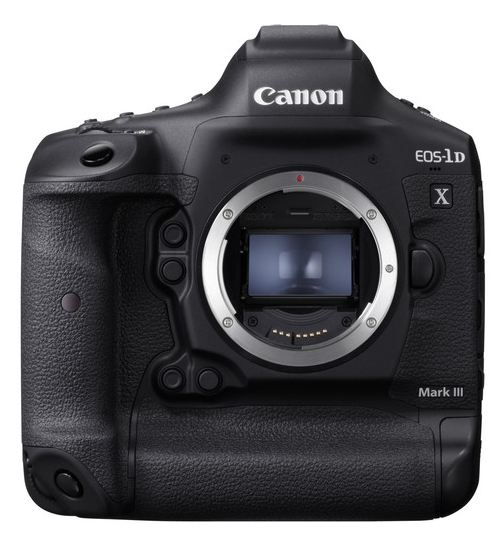
Finally Canon officially announced the Canon 1DX Mark III camera (see Canon 1DX Mark III vs Canon 1DX Mark II). Canon 1DX Mark III camera features redesigned 20MP CMOS Sensor with weak low-pass filter for more clarity in images as well as new 10th generation of Digic X image processor, that said to boost Dual Pixel AF processing by 380 times compared to Canon 1DX Mark II.
The camera also feature a new 191 point Phase AF sensor and Canon used a dedicated Digic 8 image processor for autofocus and metering through the viewfinder.
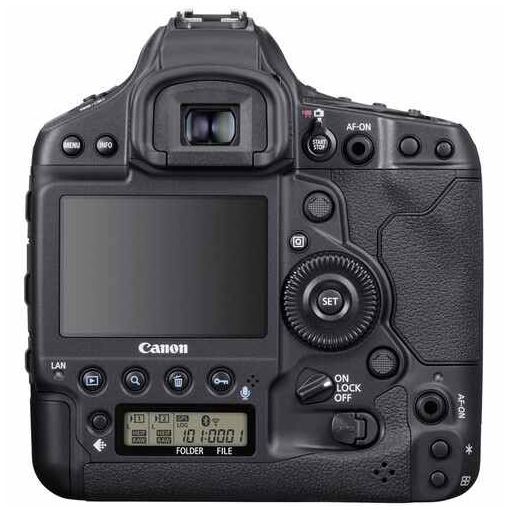
The camera now records 5.4K video with some limited DPAF performance as we have told you earlier. To handle the high amount of data genrated in the recording mode Canon 1DX Mark III camera now features dual CFexpress cards. The body has ‘improved durability’ and an optional Wireless Filter Transmitter ($650) offers faster speeds and FTP support and allows remote users to adjust settings and add IPTC tags. LP-E19 battery can take approximately 2850 shots using the viewfinder and 610 in live view (per CIPA standards).
The EOS-1D X Mark III will be available in mid-February for $6499.
Canon 1DX Mark III Full Specification Download
Canon 1DX Mark III Press Release
A MASTERPIECE IN ENGINEERING AND DESIGN: CANON ANNOUNCES THE EOS-1D X MARK III CAMERA
MELVILLE, N.Y., January 6, 2020 – Canon U.S.A. Inc., a leader in digital imaging solutions, today announced the highly anticipated Canon EOS-1D X Mark III camera – the successor to the world-renowned and award-winning EOS-1D X Mark II. The Company’s new flagship DSLR has been engineered and designed using extensive feedback from the professional sports, photojournalist, wildlife and wedding photographers.
This new groundbreaking workhorse EOS-1D X Mark III DLSR Camera features:
- New 20.1 Megapixel Full-frame CMOS Sensor combined with newly designed High Detail Low-Pass Filter
- New DIGIC X Image Processor with an ISO range of 100-102400; Expandable to 50-819200[i]
- New 191-point optical viewfinder AF system capable of tracking the subject’s head, and face using Deep Learning Technology
- New Smart Controller built into the AF-On button for fast control of the AF Point selection
- Dual Pixel CMOS AF for fast and accurate autofocus in Live View covering 90%x100% of the image area at an EV of -6 ~ 18
- The lightning-fast camera features the ability to shoot up to 16 frames-per-second in optical viewfinder shooting and up to 20 fps while in Live View shooting with mechanical or silent shutter
- Maximum buffer in continuous shooting (RAW+JPEG) of 1000 images or more with dual CFexpress card slots
- 12-bit 5.5K RAW video internal recording and oversampling 4K 60p video recording using the full width of the sensor in Canon Log with 10-bit 4:2:2
“When engineering and designing the new flagship camera, Canon’s top priority was collecting and implementing extensive user-feedback from a variety of professionals,” said Kazuto Ogawa, president and chief operating officer, Canon U.S.A., Inc. “In the end, the outcome is at first glance a familiar tool, but in reality, so much more; a camera unlike anything the company has introduced before. Canon is eagerly waiting to see what timeless memories professional image makers capture with this new camera.”
At the camera’s core is Canon’s newly developed 20.1 megapixel full-frame CMOS sensor, a High Detail Low-Pass Filter and the DIGIC X image processor. These features will help to provide professional photographers with a fast and powerful tool to capture images with a greater level of resolution, higher sensitivity, reduced moiré and improved image quality in higher ISO ranges with reduced noise. Utilizing a single DIGIC X image processor and a DIGIC 8 dedicated for AF/AE the camera’s image processing performance far exceeds and surpasses that of its predecessor, all while reducing power consumption. The DIGIC X is capable of up to approximately 3.1 times the image processing and 380 times Dual CMOS AF processing performance compared to the dual DIGIC 6+ found in the EOS-1D X Mark II. The new powerful image processor also allows for an ISO range of 100-102,400 (expandable up to 50-819,200), providing users with higher clarity images and quality in various shooting situations.
The EOS-1D X Mark III camera also provides users with equally impressive video features, with the ability to internally record 5.5K RAW video and uncropped 4K 60p derived from the original 5.5K readout in Canon Log with 10-bit 4:2:2. Canon Log allows users to record 4K and 1080p video files with up to 12 stops of High Dynamic Range and wide exposure latitude, making it simple to coordinate color settings with other Canon cameras in multi-camera set-ups. It’s ideally suited to help streamline and provide greater creative freedom during the extensive post-production processing. In addition, the camera’s HDMI terminal can be used to transmit 4K 60p data to another device for display or external recording.
When developing the EOS-1D X Mark III, Canon put a heavy emphasis on designing and installing a completely overhauled and comprehensive Auto Focus system for the user with the need for speed. The new 191-point AF system with 155-point all cross-type points helps users to quickly and smoothly track a subject and maintain a level of focusing accuracy during a variety of shooting situations such as tracking a motorcar circling around the race track or a leopard bolting across the plains. Canon has redesigned the AF sensor incorporating a new square pixel design based on an image sensor, essentially making the AF sensor 28x higher resolution at the center area.
Canon’s revolutionary Dual Pixel CMOS AF technology provides users with fast and accurate AF using 3869 manually selectable AF positions and 525 automatic areas[ii]. In Live View shooting, the EOS-1D X Mark III’s AF system supports face, head and, most noteworthy, eye detection AF tracking. Eye detection AF provides high-precision tracking by locking in on and following the eye of a moving subject. When in Live View AF/AE tracking is supported during high-speed burst shooting with the ability to capture up to 20 fps in both RAW and RAW + JPEG file format.
Using the traditional optical viewfinder, the camera has the ability to capture up to an extraordinary 16 fps with reduced time lag and image blackout. Reducing lag and image blackout greatly increases a photographer’s ability to track moving subjects and never miss a shot. Regardless of the method of shooting through the OVF or LCD, the EOS-1D X Mark III can shoot over 1000 images in a burst using the dual CFexpress cards.
To support the needs of top professionals, the camera’s communications functions have been greatly enhanced. Incorporating a dedicated Network tab in the menu, the photographer can much more easily set up network functions such as connections via built-in gigabit Ethernet, Wi-Fi® connectivity, Bluetooth connectivity and destinations such as FTP servers, EOS Utility, or Browser Remote[iii] functions. It will even support encrypted network authentication for advanced network users.
Thoughts from the First Users
“I can’t say enough good things about how well the EOS-1D X Mark III camera performed on so many levels. The new AF system is a game-changer for me, I was totally blown away by how well it performed in various situations, including very low-light levels,” said wildlife photographer and Canon Explorer of Light Adam Jones. “The ability to move the AF point quickly with the new sensor-based AF button was simply amazing; the focus followed the subject like nothing before. As a wildlife photographer, I never dreamed we would have a camera that could follow focus on fast-flying snow geese using a super-telephoto lens with 1.4x and 2x converters – but with the new camera here we are!”
“My job is to travel the world to photograph automobile racing and car culture in the harshest conditions imaginable. Racetracks, salt flats, sand dunes, frozen lakes, you name it, I photograph all things four wheels. That is why I need a camera that works as hard as we do,” said automotive photographer Larry Chen. “I started my professional career on the EOS-1D series of bodies, and I’ve had several over the years with over one million images captured. The EOS-1D X Mark III really is the next generation of professional cameras in a familiar package, the first words out of my mouth after shooting with it were ‘There are no more excuses, to miss a shot!’ I can’t wait to use it for the 2020 racing season!”
Additional Features of the Canon EOS-1D X Mark III DSLR Camera Include:
- Enhanced operational controls including button illumination, Touch AF and a multi-controller allowing users to select the desired AF point more easily
- Face-Priority E-TTL II metering enables the camera to automatically adjust to provide the appropriate output of an external flash when it detects a face
- Digital Lens Optimizer helps to correct against any potential lens diffraction or aberration based on the design of each individual lens. DLO also improves the overall resolution of an image
- Ability to capture stills in 10-bit using the HEIF (High-Efficiency Image File) file format. HEIF produces a wider dynamic range and greater color representation compared to 8-bit JPEG
- Built-in Wi-Fi®[iv], Bluetooth®[v], and GPS[vi] Technology
- Faster speed and improved user interface for networking with optional Wireless File Transmitter WFT-E9 or with the built-in gigabit ethernet port
- Canon EOS-1D series level of durability including dust-and-weather- resistance
Price and Availability
The Canon EOS-1D X Mark III DSLR camera body and WFT-E9 wireless file transmitter are both scheduled to be available in mid-February 2020 for an estimated retail price of $6,499.00 and $649.99, respectively*. For more information, please visit, cusa.canon.com.
[i] Camera’s ISO range expandable for still image shooting only.
[ii] Available AF positions may decrease when shooting with AF cropping or in movie mode, or depending on camera settings or lens attached.
[iii] Browser Remote will be supported through firmware update after shipping.
[iv] Compatible with iOS® versions 9.3/10.3/11.2-11.4/12.2/13.2, Android™ smartphone and tablet versions 5.0/5.1/6.0/7.0/7.1/8.0/8.1/9.0/10.0. Data charges may apply with the download of the free Canon Camera Connect app. This app helps enable you to upload images to social. Please note that image files may contain personally identifiable information that may implicate privacy laws. Canon disclaims and has no responsibility for your use of such images. Canon does not obtain, collect or use such images or any information included in such images through this app.
[v] Compatible with select smartphone and tablet devices (Android™ version 5.0 or later and the following iOS® devices: iPhone 4s or later, Pod Touch 5th gen. or later) equipped with Bluetooth® version 4.1 or later and the Camera Connect App Ver. 2.5.10. This application is not guaranteed to operate on all listed devices, even if minimum requirements are met.
[vi] in certain countries and regions, the use of GPS may be restricted. Therefore be sure to use GPS in accordance with the laws and regulations of your country or region. Be particularly careful when traveling outside your home country. As a signal is received from GPS satellites, take sufficient measure when using in locations where the use of electronics are regulated.
By admin, on January 5th, 2020

We are getting lot of questions related to the video mode of Canon 1DX Mark III camera. So, here is your answer
Does Canon 1DX Mark III Camera have AF in 4K Video Mode ?
Yes it do full DPAF support when you are shooting 4K Videos at 24fps and 30fps mode. But, when you are shooting videos in 4K 60p/50p you won’t get DPAF then. Similarly, when you are recording Videos on RAW mode you don’t have DPAF.
Canon 1DX Mark III Video AF Details
- RAW 5.4K (59.94p / 50.00p) 2,600 Mbps – No DPAF
- RAW (29.97p / 25.00p / 24.00p / 23.98p) – 1800 Mbps – No DPAF
- 4K DCI (59.94p / 50.00p) / ALL-I About 940 Mbps – No DPAF
- 4K DCI (59.94p / 50.00p) / IPB – 230 Mbps – No DPAF
- 4K DCI (29.97p / 25.00p / 24.00p / 23.98p) / ALL-I – About 470 Mbps – DPAF Active
- 4K DCI (29.97p / 25.00p / 24.00p / 23.98p) / IPB – About 120 Mbps – DPAF Active
- 4K DCI Crop (59.94p / 50.00p) / ALL-I – About 940 Mbps – DPAF Active
- 4K DCI Crop (59.94p / 50.00p) / IPB 230 Mbps – DPAF Active
- 4K DCI Crop (29.97p / 25.00p / 24.00p / 23.98p) / ALL-I Approx. 470 Mbps – DPAF Active
- 4K DCI Crop (29.97p / 25.00p / 24.00p / 23.98p) / IPB Approx. 120 Mbps – DPAF Active
- 4K UHD (59.94p / 50.00p) / ALL-I About 940 Mbps – No DPAF
- 4K UHD (59.94p / 50.00p) / IPB 230 Mbps – No DPAF
- 4K UHD (29.97p / 25.00p) / ALL-I – About 470 Mbps – DPAF Active
- 4K UHD (29.97p / 25.00p) / IPB – About 120 Mbps – DPAF Active
- Full HD (119.9p / 100.0p) / ALL-I About 360 Mbps – DPAF Active
- Full HD (59.94p / 50.00p) / ALL-I 180 Mbps – DPAF Active
- Full HD (59.94p / 50.00p) / IPB About 60 Mbps – DPAF Active
- Full HD (29.97p / 25.00p) / ALL-I Approx. 90 Mbps – DPAF Active
- Full HD (29.97p / 25.00p) / IPB About 30 Mbps – DPAF Active
- Full HD (29.97p / 25.00p) / IPB ( Light ) About 12 Mbps – DPAF Active
See more about Canon 1DX Mark III
We will update you soon as we get any new information.

Get LIVE RUMORS –> FACEBOOK | TWITTER | INSTAGRAM to to get live news + Canon rumors 24X
By admin, on January 3rd, 2020
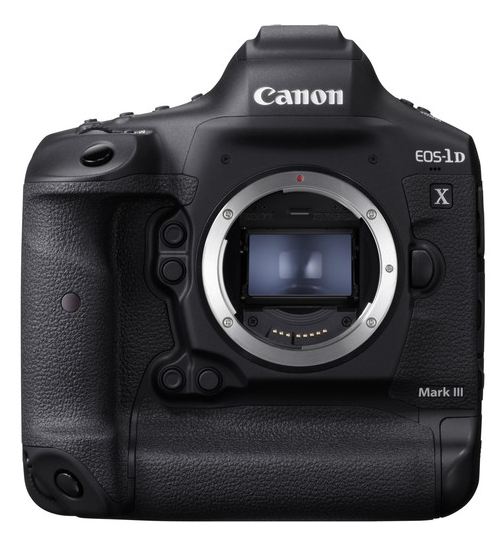
Finally we have the detailed specification of the to be announce Canon 1DX Mark III camera. Have a look.
Canon EOS-1D X Mark III Major features
- 20.1mp
- 16fps/20fps
- ISO 100-102,400
- 4K at 60p (No DPAF in 4K)
- Dual CFexpress card slots
Canon EOS-1D X Mark III Full Specifications:
- Digital single-lens reflex AF / AE camera
- Memory Card: Dual CFexpress
- Image sensor size: 35.9 x 23.9 mm
- Lens mount: Canon EF Lens Family
* Except for EF-S lens and EF-M lens (effective field of view is almost the same as the effective field of view of the lens focal length)
- Image Sensor Type: CMOS
- Image Sensors Resolution: 20 million pixels
* Rounded to 100,000 units
- Aspect ratio: 3: 2
- Dust removal function
- Auto / Manual, Dust Delete Data Attached
- Record format: DCF 2.0
- Image format
JPEG (8bit), HEIF (10bit), RAW (14bit Canon original)
RAW + JPEG simultaneous recording is possible
RAW + HEIF simultaneous recording possible
* 12-bit A / D conversion processing is applied to RAW images taken with the electronic shutter
- Record Pixels
JPEG
L Approx. 20 million pixels (5472 × 3648)
M1 Approx.12.7 million pixels (4368 × 2912)
M2 Approx.8.9 million pixels (3648 × 2432)
S approximately 5 million pixels (2736 × 1824)
HEIF L Approx. 20 million pixels (5472 × 3648)
RAW RAW / C-RAW Approx. 20 million pixels (5472 × 3648)
- Storage function: Still photo / video split, Still photo save option, Movie save option, Still photo save / playback, Save / play video
- Create and select folder possible
- Filename: Default setting, user setting 1, user setting 2
- File number: Continuous, auto reset, manual reset
- Image processing during shooting
- Picture style
Auto, Standard, Portrait, Landscape, Fine Detail, Neutral, Faithful, Monochrome, User Def. 1–3
- White balance
Auto (Atmosphere Priority), Auto (White Priority), Preset (Sunlight, Shade, Cloudy, Tungsten, White, Fluorescent light, flash),
- User setting, color temperature setting (approximately 2500-10000 K)
White balance correction and white balance bracketing
Flash color temperature information can be sent
- White balance correction
Blue / amber correction: ± 9 levels
Magenta / Green Correction: ± 9 Levels
- White Balance Bracketing
± 3 stops in 1-stop increments
- Automatic Image Brightness Correction
- Auto brightness optimization
- Noise reduction
Applicable for high ISO speed shots and long exposures
- Highlight tone priority
- Lens aberration correction
- Peripheral Illumination Correction, Distortion Correction, Digital Lens Optimization, Chromatic Aberration Correction, Diffraction Correction
- Viewfinder: Eye Level Pentaprism
- Field of view (range): Approximately 100% of width / length (eye point approximately 20mm)
- Magnification: 0.76x (-1m–1 with 50 mm lens at infinity)
- Diopter: 20 mm (at eyepiece end / -1 m-1)
- Diopter adjustment range: -3.0 – +1.0 m-1 (dpt)
- Depth-of-field previewsupport
- Auto focus [Viewfinder Shooting]
- Focus method:TTL secondary imaging phase difference detection method (using dedicated AF sensor)
- AF point: Up to 191 points (cross-type AF point: up to 155 points)
- Number of available AF points, number of dual cross-type AF points and cross type AF
- The number of points depends on the lens used.
- Dual cross-type focusing at F2.8 with center AF point
- Focus brightness range: EV -4 – 21 (F2.8 compatible center AF point, One-Shot AF, Room temperature, ISO 100)
- Focus action: One-Shot AF, AI Servo AF, Manual Focus (MF)
- AF area selection mode: Manual selection: Spot AF, Manual selection: 1 point AF, AF area extension: Landscape / Portrait, AF area extension: Surround,
Manual selection: Zone AF, Manual selection: Large zone AF, Auto selection AF
Subject Recognition AF
- EOS iTR AF settings (color information, face and head can be identified)
iTR: Intelligent Tracking and Recognition
- AF configuration tool Case 1 – 4, Case A
- AI Servo AF Characteristics
- Tracking Sensitivity, Acceleration / Deceleration Tracking
- AF fine adjustment
- AF Microadjustment (All lenses by same amount, Adjust by lens)
- AF assist light
- Flash from external flash for EOS camera
[Live View Shooting / Movie Recording]
Focus method
- Dual Pixel CMOS AF
* AF is not available when recording RAW or 4K 59.94 p / 50.00 p (NTSC / PAL) movies.
- AF method: Face + Tracking, Spot AF, 1 Point AF, AF Area Expansion (Horizontal / Vertical), AF Area Expansion: Ambient, Zone AF,
Large Zone AF: Vertical, Large Zone AF: Horizontal
Available AF Frame Position Up to 3,869 locations
* When selected with multi-controller
- AF areas available for auto selection
- Up to 525 points
- Eye detection AF support
- Magnified view: 5 times / 10 times
- AF area
Horizontal: Approx. 90%, Vertical: Approx. 100%
Horizontal: Approx. 80%, Vertical: Approx. 80%
* Depends on the lens used.
- Manual focus (MF)
- MF peaking, focus guide
[Live View Shooting]
- AF operation
- One-Shot AF, Servo AF, Continuous AF possible
- Focus brightness range: EV -6 – 18
(F1.2, center AF point, room temperature, ISO 100, One-Shot AF)
- AF configuration tool: Case 1–4, Case A
- Servo AF Characteristics
- Tracking Sensitivity, Acceleration / Deceleration Tracking
[Record video]
- Focus brightness range: EV -4 – 18
(f/1.2, center AF point, room temperature, ISO 100, One-Shot AF, 29.97 fps)
- Video Servo AF support
- Video Servo AF Characteristics
- Tracking Sensitivity, AF Speed
- Exposure control
- Metering mode
- Viewfinder shooting: 216-division (18×12) TTL using approximately 400,000-pixel RGB + IR metering sensor
Open metering
- Live View shooting / Movie recording: 384 split (24×16) metering using signals from the image sensor
Metering mode
- Viewfinder shooting:
- Evaluative metering
- Partial metering (approximately 6.2% of screen)
- Spot metering (approximately 1.5% of screen)
* AF point-linked spot metering and multi-spot metering options included.
- Center-weighted average metering
- Live View shooting: Evaluative metering, partial metering (approximately 5.8% of the screen), spot metering (approximately 2.9% of the screen)
- Video recording: center-weighted average metering, evaluative metering
* Automatically set according to shooting conditions.
- Focus brightness range
- Viewfinder shooting: EV 0 – 20 (room temperature, ISO 100)
- Live View shooting / Movie recording: EV -3 – 20 (at room temperature, ISO 100)
Shooting mode
- Taking still photos:
- Program AE, Shutter-Priority AE, Aperture-Priority AE, Manual Exposure, Bulb
- Exposure, Custom Shooting Mode
(C1 / C2 / C3)
- Video recording:
- Program AE, Shutter-Priority AE, Aperture-Priority AE, Manual Exposure,
- Custom Shooting Mode (C1 / C2 / C3)
- ISO sensitivity (recommended exposure index)
- Taking still photos:
- ISO Auto (automatic setting in the range of ISO 100 – 102400),
- Manual setting in ISO 100 – 102400 range (in 1 / 3- or 1-stop increments), L (equivalent to ISO 50),
- Sensitivity extended to H1 (equivalent to ISO 204800), H2 (equivalent to ISO 409600), and H3 (equivalent to ISO 819200)
possible
* When highlight tone priority setting: ISO 200 – 102400
- Video recording:
- Program AE / Av / Tv: ISO Auto (automatically set within the range of ISO 100 – 25600), H1 (ISO 204800 equivalent)
M: ISO Auto (automatically set within the range of ISO 100 – 25600),
Manual setting in ISO 100 – 25600 (in 1 / 3- or 1-stop increments), H1 (ISO 204800
- Sensitivity can be extended
* When highlight tone priority setting: ISO 200 – 25600
- ISO sensitivity settings
- Taking still photos:
SO speed setting range, auto range, minimum shutter speed
- Video recording:
- ISO sensitivity setting range, automatic maximum value
- Exposure compensation
- Manual: ± 5 stops in 1 / 3- or 1 / 2-stop increments (viewfinder shooting),
± 3 stops in 1 / 3- or 1 / 2-stop increments (Live View shooting, movie recording)
- AEB: ± 3 stops in 1 / 3- or 1 / 2-stop increments (can be combined with manual exposure compensation)
- AE lock
- Still photo shooting:
- Auto: AE lock with Custom Function when focus is achieved in each metering mode can be set on / off
- Manual: using the AE lock button
- Movie recording: using the AE lock button
- Flicker Reduction
- Available (when viewfinder shooting)
- Multiple exposure
- Function / operation priority, continuous shooting priority
- Multiple exposures: 2 – 9 times
- Multiple exposure control
- Increase, average, brighten, darken
- HDR shooting (still picture HDR PQ)
- Record format
- HEIF
- Bit depth
- 10bit
- Color sampling
- YCbCr 4: 2: 2
- HDR specification
- ITU-R BT.2100 (PQ)
- Electronically controlled focal plane shutter
- Shutter method
- Viewfinder shooting: mechanical
- Live View shooting: mechanical, electronic curtain, electronic
- Mechanical / electronic curtains: 1/8000 sec – 30 sec, bulb
Electronic setting: 1/8000 sec – 0.5 sec
Maximum shutter speed during flash synchronization: 1/250 sec.
* The setting range is different for movie recording.
- Drive modes: Single shot, high speed continuous shooting, medium speed continuous shooting, low speed continuous shooting, one soft shooting, soft continuous shooting
- Shooting, soft low-speed continuous, self-timer: 10 seconds, self-timer: 2 seconds
- Continuous shooting speed: One-Shot AF up to approx. 16 shots / sec
(Setting range: 3-16 sheets / sec)
- Up to approx. 20 shots / sec
- AI Servo AF / Servo AF
- Medium speed continuous shooting: One-Shot AF Approx. 10 shots / sec
(Setting range: 2-15 sheets / sec)
- Approx. 10 shots / sec. * 3
- AI Servo AF / Servo AF
- Time lapse
- One-Shot AF Approx.3.0 shots / sec
(Setting range: 1-14 sheets / second)
- Approx.3.0 sheets / sec
- AI Servo AF / Servo AF
- Soft continuous shooting
- 8.0 shots / sec
(Setting range: 2-8 sheets / second)
- Approx. 10 shots / sec. * 3
We will update you soon as we get any new information.

Get LIVE RUMORS –> FACEBOOK | TWITTER | INSTAGRAM to to get live news + Canon rumors 24X7
By admin, on January 2nd, 2020
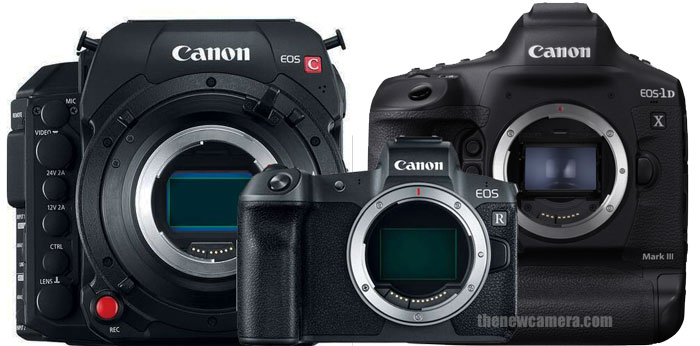
We have spotted a patent were you can clearly see Canon working on a hybrid Mount Video aka Cinema Camera. Let’s go step by step to understand how the Canon Hybrid Mount Camera works
1. Canon Hybrid Mount Camera is Reality and Not-Just a Rumor
Yes, We have discovered patent that clearly shows Canon is working on Hybrid Mount camera. But, as per the patents Canon is initially working on Cinema camera with Hybrid Mount. In near future they may also implement the same technology to Canon Mirrorless Cameras or DSLRs.
2. How Canon Hybrid Mount Camera Work ?
- Once use attaches the lens camera power – ON the camera, the Mount detection unit gets activated.
- Once the camera detects the type of Lens used in the camera, it opens up it’s dedicated user-interface options for particular lens mount.
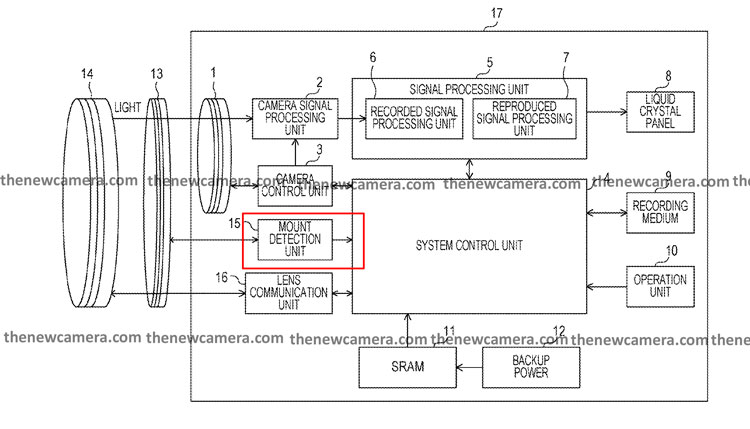
From the flow-chart below you can understand the mode of operation of a Hybrid Mount camera once the lens is attached to it.
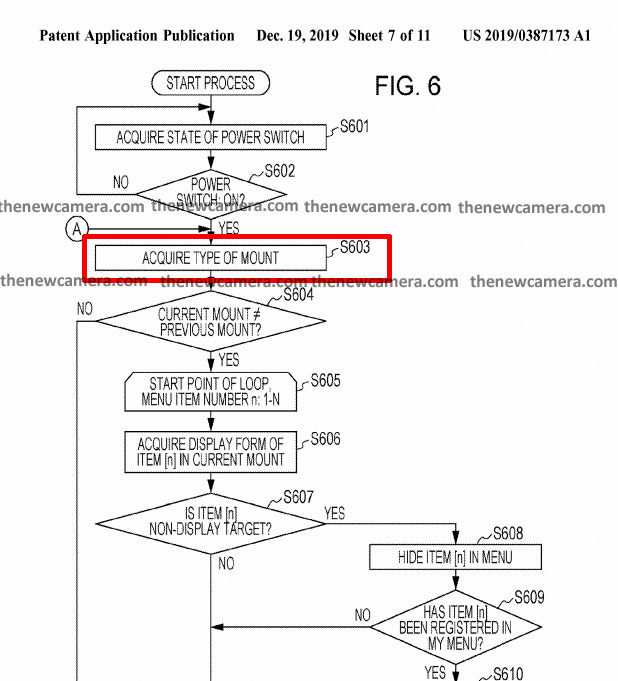
So, finally we have the Hybrid camera patents. And in general once a patent get registered it roughly take two or three years to become a reality. So, if everything goes well we may see a hybrid mount camera sometime in 2022 or may be 2023.
We will update you soon as we get any new information.

Get LIVE RUMORS –> FACEBOOK | TWITTER | INSTAGRAM to to get live news + Canon rumors 24X7
By admin, on January 2nd, 2020
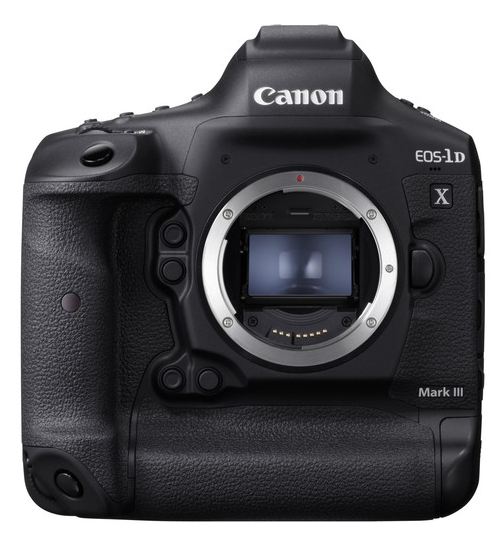
Finally, we have the full specification of the Canon 1DX Mark III camera. Take a look at the official high-resolution images of the Canon 1DX Mark III camera. The camera do have a option to record 4K video at 60p, plus the options of capturing RAW video or 10-bit 4:2:2 video with Canon Log, both recorded internally to CFexpress cards. The new Sensor have 525 AF Zones and completely new AF algorithm, which is more fast and accurate than Canon 1DX II camera.
Click here to view press images of Canon 1DX Mark III
EOS-1DX Mark III – The next level in pro DSLR quality and performance
A new era in autofocus speed and accuracy
The EOS-1D X Mark III will feature a brand-new AF sensor with 28x more resolution than its predecessor, using advanced AF algorithms with deep learning technology for incredible focus tracking in any situation. And in Live View and video there will be the added advantage of Dual Pixel CMOS AF across approximately 90×100 percent of the sensor with 525 AF areas. With AF over a wider EV range focusing with an EOS DSLR truly will never have been more accurate and versatile.
Outstanding stills and video
With a new Canon CMOS sensor and powerful new DIGIC processing, image quality even at high ISO will be taken to even greater levels along with 4K video at 60p, plus the options of capturing RAW video or 10-bit 4:2:2 video with Canon Log, both recorded internally to CFexpress cards. A new bright viewfinder will help connect you to your subject in real time.
High speed camera communications
Delivering captured content quickly is the vital next step for a professional. This is why the EOS-1D X Mark III will feature Wi-Fi and Bluetooth low Energy connectivity and GPS capability for seamless communication. With double the transfer speeds of the EOS-1D X Mark II, via the built-in Ethernet port or through the optional WFT-E9, and with a revised user interface for simpler and more intuitive operation, the new EOS-1D X Mark III will be designed to get the job done faster than any EOS ever before.
Always ready to perform, whatever the situation
The EOS-1D X Mark III will be radically upgraded for superb performance. Not only will it offer a blistering frame rate with the optical viewfinder including AE and focus tracking, but also dramatic improvements in Live View mode with the same level of accuracy, plus the ability to shoot using an electronic shutter. The camera will be engineered to excel in all areas, with dramatically improved battery life using the LP-E19 battery, new illuminating buttons and an all-new AF point selection control within the AF-ON button in addition to the multi-controller. All in a magnesium alloy weather-sealed body.
- A new era in autofocus speed and accuracy
- Outstanding stills and video
- High speed camera communications
- Always ready to perform, whatever the situation
- Enhanced DIGIC Processor
- New CMOS Sensor
- 16 fps Mechanical Shutter, with Optical Viewfinder
- 20 fps Mechanical or Electronic Shutter, During Live View
- Backlit buttons
We will update you soon as we get any new information.

Get LIVE RUMORS –> FACEBOOK | TWITTER | INSTAGRAM to to get live news + Canon rumors 24X7
|
KEEP THIS BLOG ALIVE - Support New Camera Buy Canon Lenses, Buy Music CD or Digital Camera at amazon it helps this site, and you do not pay anything extra, it is just a way to help support this site.

|















